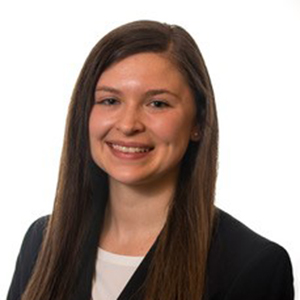CV Training as We Know It: A Look Toward the Future

In light of the recent announcement by the ACC/AHA/HFSA/HRS/SCAI to seek the creation of a new, independent cardiovascular board of medicine, separate from the umbrella of internal medicine, it is clear that cardiovascular medicine is an expansive and growing field that offers numerous possibilities for practice. Like never before, practicing cardiologists reach all corners of medicine. Cardio-oncology, cardio-obstetrics and advanced cardiac imaging all demonstrate how integrated cardiology has become in the broader scope of patient care.
With this growth and expansion in the field comes an important consideration in the life of a cardiologist: time. While historically a newly minted physician must complete three years of internal medicine, three years of general cardiology and an additional one to two years for any one given subspecialty within cardiology, this timeline is being rethought. Residents and fellows in training (FITs) must recognize and commit to additional years of training should their interest pique in a niche area of cardiology. Any extra time taken for dedicated research, serving as chief resident, or for nontraditional or second career journeys, needs to be factored in.
What does this often entail for the trainee? While each path varies, for many this can look like delaying family planning, delaying financial security or sacrificing these aspects altogether.
While changes have been proposed to make the path to cardiology less time-intensive, it may be years before any solutions are implemented. However, there are some alternative pathways currently being offered to FITs that can expedite one's path to their dream job. A perfect example is the recent pilot program through the ACC and HRS that allows formal electrophysiology training to start during the third year of a general cardiology fellowship. Thus, rather than the current model of a three plus two-year track, one can take a two plus two-year expedited route.
However, one important aspect to recognize is that not all cardiovascular training programs are created equal. While some offer a "frontloaded" schedule during the first two years of training with the third year tailored at gaining additional exposure to the trainee's future area of interest, other programs do have core clinical rotations spread out amongst all three years. This rotation format may preclude some programs from adapting the two plus two model without significant structural changes to their program and are important aspects for residents applying to cardiovascular medicine training programs to consider. Models like the ACC/HRS model also require institutions to have established training programs in both fields in order to work.
The ease of extending one's training to obtain all the necessary knowledge before going into practice is another conundrum. In the area of interventional cardiology, the typical single year program is easily extended into a second year to gain exposure to newer structural intervention techniques. Similarly, should a procedural specialist want to offer services to specific patient populations such as patients with adult congenital heart disease or vascular diseases, additional training programs can range from one to two years. In the evolving area of cardio-obstetrics, many programs are looking to offer additional one-year training programs for those expressing interest.
It is easy to see how cardiology training alone can extend many years for any interested and motivated trainee. Overall, the cardiovascular societies involved in this proposal to create a new cardiovascular board should be congratulated for challenging the current educational model and its role in modern day cardiology and medical training. At the very least, this proposal prompts an important discussion about the effectiveness and applicability of our current educational model as it pertains to practicing cardiologists today and opportunities to explore new and effective models that address the breadth of the cardiovascular field.
Related Resource: Cardiovascular Fellowship Training in Cardio-Obstetrics: JACC Review Topic of the Week | Journal of the American College of Cardiology
.
This article was authored by Heather Wheat, MD, FIT at University of Michigan.
This content was developed independently from the content developed for ACC.org. This content was not reviewed by the American College of Cardiology (ACC) for medical accuracy and the content is provided on an "as is" basis. Inclusion on ACC.org does not constitute a guarantee or endorsement by the ACC and ACC makes no warranty that the content is accurate, complete or error-free. The content is not a substitute for personalized medical advice and is not intended to be used as the sole basis for making individualized medical or health-related decisions. Statements or opinions expressed in this content reflect the views of the authors and do not reflect the official policy of ACC.
